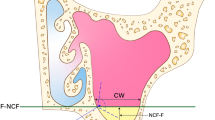Abstract
Background and Aim: Three-Dimensional Computer Aided Simulation (3D-CAS) in Expansion have been a vast section for use in Maxillary Surgery (MS). However, it has some limitation in practical operation due to less evaluation in the technical area. Methodology: This research introduce a new taxonomy called Data, Transverse Image Processing in Expansion, and Response to Processed Outcome (DTR) which define the major components that are required to implement computer aided simulation in 3D maxillary surgery. We propose and consider these components focusing on validation criteria for simulation modelling in maxillary surgery during operation. DTR taxonomy of MS expansion is a forward step that will help the end users and the surgeons to analyze and understand constraints of simulation modelling in expansion focusing on its use in operating system. Results: We evaluated DTR taxonomy based on position accuracy, stress distribution and stress displacement with minimum processing timeframe. We demonstrated the effectiveness of DTR taxonomy by classifying nine state-of-the-art research papers in the domain of 3D-CAS expansion in MS systems. Conclusion: Our classification shows that components of maxillary surgery expansion have been validated and some of them are evaluated. This article reviews the image processing in the surgical room for pre-operative and intra-operative scenario in terms of position accuracy, operation time, stress distribution and stress displacement to ease the surgical procedure.
Access this chapter
Tax calculation will be finalised at checkout
Purchases are for personal use only
Similar content being viewed by others
References
Guerrero-Vargas, J.A., Silva, T.A., Macari, S., De Las Casas, E.B., Garzón-Alvarado, D.A.: Influence of interdigitation and expander type in the mechanical response of the midpalatal suture during maxillary expansion. Comput. Methods Programs Biomed. 176, 195–209 (2019). https://doi.org/10.1016/j.cmpb.2019.05.007
Knoops, P., et al.: Three-dimensional soft tissue prediction in orthognathic surgery: a clinical comparison of Dolphin, ProPlan CMF, and probabilistic finite element modelling. Int. J. Oral Maxillofac. Surg. 48(4), 511–518 (2019). https://doi.org/10.1016/j.ijom.2018.10.008
Kayalar, E.S.-S.: Nasal soft- and hard-tissue changes following tooth-borne and hybrid surgically assisted rapid maxillary expansion: a randomized clinical cone-beam computed tomography study. J. Cranio-Maxillofac. Surg. 47, 1190–1197 (2019). https://doi.org/10.1016/j.jcms.2019.01.005
Blæhr, T.L., Mommaerts, M.Y., Kjellerup, A.D., Starch-Jensen, T.: Surgically assisted rapid maxillary expansion with bone-borne versus tooth-borne distraction appliances—A systematic review. International J. Oral Maxillofac. Surg. 48(4), 492–501 (2019). https://doi.org/10.1016/j.ijom.2018.12.010
Gul, A., et al.: Three-dimensional soft tissue effects of mandibular midline distraction and surgically assisted rapid maxillary expansion: an automatic stereophotogrammetry landmarking analysis. Int. J. Oral Maxillofac. Surg. 48(5), 629–634 (2019)
Fındık, Y., Baykul, T., Yazıcı, T.: Nasal soft tissue changes after two different approaches for surgically assisted rapid maxillary expansion. Int. J. Oral Maxillofac. Surg. 48(7), 957–961 (2019). https://doi.org/10.1016/j.ijom.2019.01.019
Cantarella, D., et al.: Midfacial changes in the coronal plane induced by microimplant-supported skeletal expander, studied with cone-beam computed tomography images. Am. J. Orthod. Dentofac. Orthop. 154(3), 337–345 (2018). https://doi.org/10.1016/j.ajodo.2017.11.033
Ismail, M., Wessel, J., Farrell, B.: Maintenance of segmental maxillary expansion: the use of custom, virtually designed, and manufactured palatal appliances without the use of an occlusal splint. J. Oral Maxillofac. Surg. 77(7), 1468.e1-1468.e8 (2019). https://doi.org/10.1016/j.joms.2019.03.013
Asan, C.Y., Kütük, N., Kurt, G., Alkan, A.: Development of a new three-directional distractor system for the correction of maxillary transverse and sagittal deficiency. J. Cranio-Maxillo-Fac. Surg. 46(3), 424–431 (2018). https://doi.org/10.1016/j.jcms.2017.12.010
Author information
Authors and Affiliations
Corresponding author
Editor information
Editors and Affiliations
Rights and permissions
Copyright information
© 2022 The Author(s), under exclusive license to Springer Nature Switzerland AG
About this paper
Cite this paper
Tandukar, K., Salah, R.M., AlSallami, N., Altaf, S., Ahmed, S., Sandhu, G. (2022). DTR Taxonomy on 3D Computer Aided Simulation of Image Processing Expansion in Facial Maxillary Surgery: An Extensive Review. In: Daimi, K., Al Sadoon, A. (eds) Proceedings of the ICR’22 International Conference on Innovations in Computing Research. ICR 2022. Advances in Intelligent Systems and Computing, vol 1431. Springer, Cham. https://doi.org/10.1007/978-3-031-14054-9_12
Download citation
DOI: https://doi.org/10.1007/978-3-031-14054-9_12
Published:
Publisher Name: Springer, Cham
Print ISBN: 978-3-031-14053-2
Online ISBN: 978-3-031-14054-9
eBook Packages: Intelligent Technologies and RoboticsIntelligent Technologies and Robotics (R0)




